Genre: Action/RPG Developer: Sega Enterprises Publisher: Sega Enterprises Players: 1-2 Released: 1987
It would be best to avoid perplexing readers with the convoluted publishing history of the Wonder Boy series. All that needs to be known for the purposes of this review is that Wonder Boy in Monster Land is a console port of Wonder Boy: Monster Land, the sequel to the original Wonder Boy that was also ported from the arcade to the Master System. It is also the first game in what became known as the Monster World series. The series as a whole is now much better known by the console games in its various forms.
As someone who has long loved the series, it may be surprising to learn that this was my first time playing Wonder Boy in Monster Land. I remember enjoying the arcade game, though I only ever got a short way in before getting game over. I am far more familiar with the sequels on Mega Drive, as well as the direct sequel on Master System but never had much experience with the game that branched into the Monster World series until now.
The game signals the change of direction at the very beginning with Tom-Tom (at least on Master System) coming out of the forest and taking up a sword to fight a dragon. There is no girlfriend (or princess) to rescue, and the task is simply to slay a dragon like the knights of legend. From there, the game takes place in a fantasy setting with a mixture of nasty and friendly monsters encountered throughout the game, only shaken by a very late twist. One immediate observation is that much like the original Wonder Boy, Monster Land retains many of its arcade roots, including the punishing enemies, time limit, and the game being split into multiple rounds. The latter two were removed in the sequels, which encouraged exploration and allowed players to do so at their own pace.
Monster Land is generally easier than the arcade version if you’re comparing playthroughs on one credit, but unlike the arcade version, this port allows no continues and Game Over is where the game ends. There are no passwords or saving progress, as found in the sequels. The only defence is having a revival potion and only one can be held at a time. They’re also expensive to buy and only available at a few points in the game.
Adding to the difficulty is the ability and importance of upgrading equipment. There are multiple upgrades to armour, shields, boots, and swords available during the game. With the exception of swords, these are bought from shops and get very expensive. They are quite necessary for latter areas of the game — especially the final gauntlet in Round 12. Gold is obtained from enemies and hidden in many places each round, but the amounts received are randomised and between health restoration and upgrades, it is easy to be constantly short of money. There are some tricks to get around this but new players will probably be perplexed at the high prices and wonder how it is possible to earn enough gold to carry them through. New swords are obtained through hidden boss fights in certain rounds, many of which are very easy to miss.
Early in the game, there is a hint given for a hidden door as a kind of tip for the many such doors to be found throughout the world. At the time, secret doors, cheats, and items were shared in the playground among friends who traded secrets about different games. Someone coming to Wonder Boy in Monster Land fresh will find the many secrets to be almost unfairly obscure. This was not uncommon in early titles and a number of the better Master System games had similarly obtuse secrets. Discovering these secrets for yourself is hindered quite a bit by the unforgiving time limit that begins sapping player health with little warning.
If you played Wonder Boy in Monster Land at the time of release and are already thoroughly familiar with the layout of the rounds and their secrets, it is a much easier game to love. Coming to it mostly fresh is a different matter and a guide is recommended for new players, especially for finding the needed upgrades and maximizing the amount of gold. The plethora of secrets and difficulty (especially in the last round) are the big barriers to new players.
This all might sound negative but despite the rough edges from its arcade origins, Wonder Boy in Monster Land is still a fun game. There is a good variety of enemies and interesting characters encountered in shops and buildings throughout the world. The little touches, such as shopkeepers becoming impatient if you don’t buy fast enough, add to its charm and character too. Moreover, the many secrets can make for rewarding discoveries, and the more patient player will no doubt find enjoyment this way too.
The game differs from the arcade game in a few other notable ways. There is certainly a visual downgrade but it still has great visual design for the time and compared to similar titles on the Master System. The soundtrack is also slightly different and open to debate as to whether it was better than the arcade original. I do believe the coin-op version has more tracks overall. There is also one extra round in the Master System version, which brings the total to twelve, and there is plenty of variety between each.
While I certainly prefer the sequels, I know they wouldn’t exist without Wonder Boy in Monster Land. New players today will have quite a hurdle to get over with the obscure puzzles, secrets, and often challenging gameplay but there is a rewarding and fun experience to be had despite these issues. The sequels would take the best aspects of this game and expand on them in the same way this one did for the original Wonder Boy. Wonder Boy in Monster Land remains one of the most memorable titles released on the Master System and leaves a strong legacy in the series that followed.
SCORE: 7 out of 10

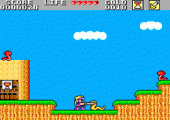
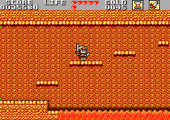
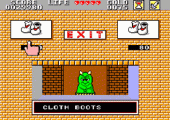
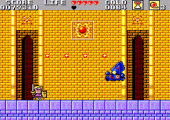
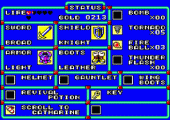
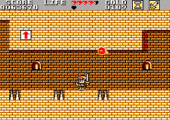
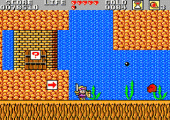
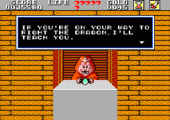
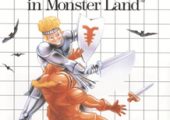
Recent Comments